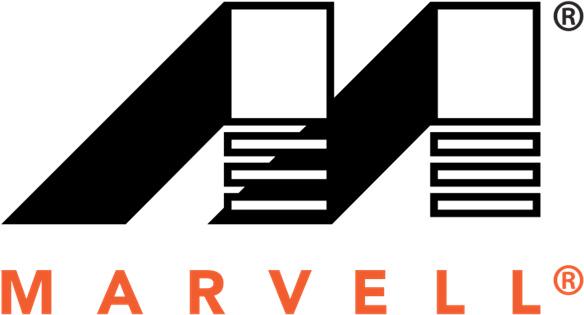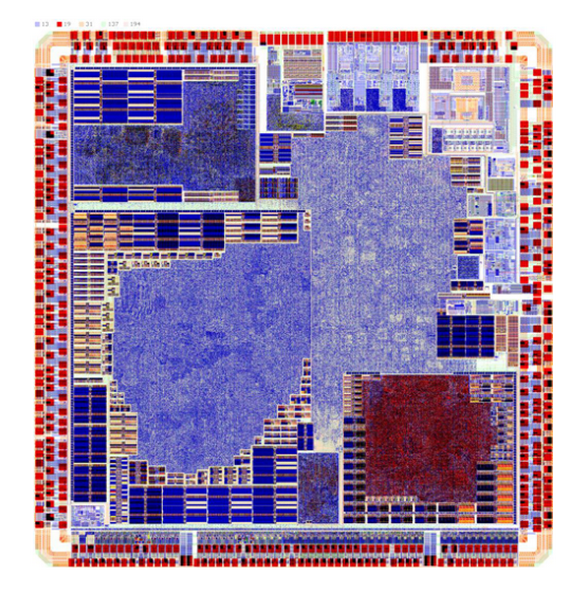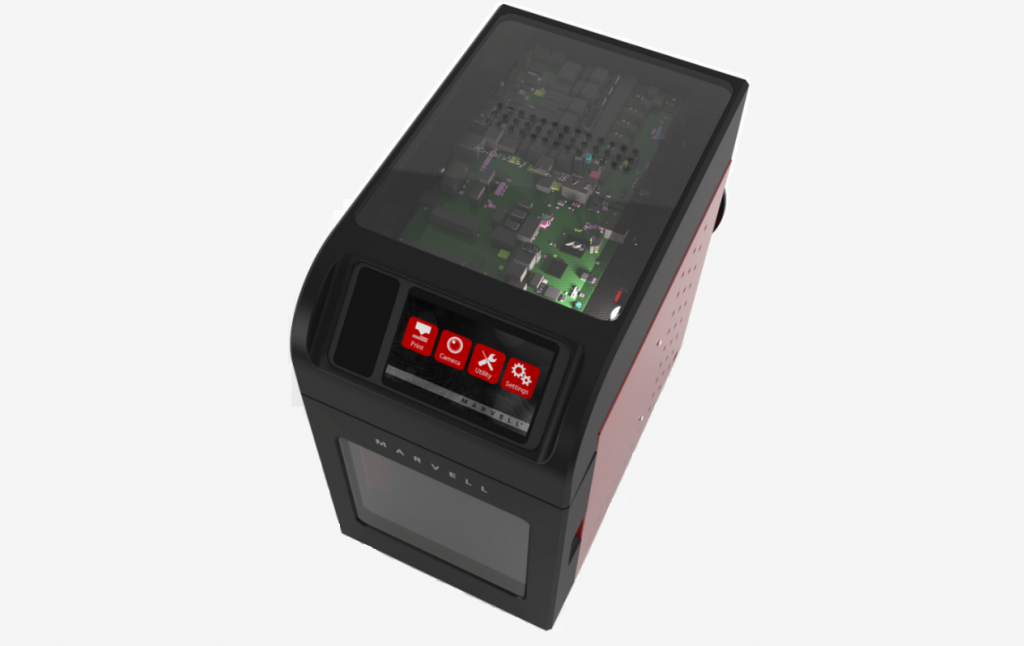 Its always great to see some of the larger, more well known companies take an interest in 3D printing. We’ve seen this with Autodesk, Hewlett Packard, and Amazon. The technology’s footprint is expanding faster than most industry analysts had ever thought possible. Today comes news of yet another large NASDAQ listed company entering the market.
Its always great to see some of the larger, more well known companies take an interest in 3D printing. We’ve seen this with Autodesk, Hewlett Packard, and Amazon. The technology’s footprint is expanding faster than most industry analysts had ever thought possible. Today comes news of yet another large NASDAQ listed company entering the market.
Marvell (NASDAQ:MRVL), a company specializing in communications, storage, networking, wireless, and semiconductor products since 1995, has announced plans to enter the 3D printing space. The company, which had revenues of $3.17 billion in 2013 alone, will do so by introducing the industry’s first fully integrated 3D printing system-on-chip (SoC) solution. The technology platform, which Marvell hopes to team with various 3D printer manufacturers for, is based on the company’s 88PA6120 SoC, which they say is a hardware development kit and full Linux-based software development kit that addresses the various needs seen within the 3d printing space.
3DPrint.com had an opportunity to speak with Jeff James, Director of Marketing and Business Development of Printer BU at Marvell, as well as Marvell’s Product Line Manager for 3D Printing Solutions, Justin Sykes, about what this new SoC solution will mean, not only for Marvell as a company, but also consumers and manufacturers of 3D printers.
“We think it is a prime time in the market right now to announce this, as we see more and more players coming on board,” Jeff James told 3DPrint.comm. “The 3D printer market is growing and evolving. Today the products are focused on a technician being able to operate, and they need to make that leap into becoming more available to the masses. Marvell, with the high performance processors that we are offering is going to help our customers deliver their products to the market.”
Their SoC solution looks to help 3D printing go mainstream in several major ways. It will includes the company’s aforementioned 88PA6120, which is a 533 MHz, ARM v7 compatible processor featuring dual real-time microprocessors that will allow for “precision” motion control. It will be able to provide precision controls of motor drives on these 3D printers in real time. The solution according to Jeff James will offer a lot more capabilities than the standard off-the-shelf processors that we see in 3D printers today.
Marvell tells 3DPrint.com that their solution will not only focus on one segment of the 3D printing market. Their chips will be available for both industrial level machines like we see from companies such as 3D Systems and Stratasys, as well more conventional desktop machines that we see from companies like MakerBot, Formlabs, etc.
“Our solutions will work with both,” explained Jeff James to 3DPrint.com. “[They can] target the desktop (3D printers) and make the experiences for the users much better, but it can also be used for the higher performance commercial type applications as well. We think that the most growth at this point is going to be in the consumer desktop products.”
 The solution will work for multiple technologies such as SLA, FDM/FFF, etc. In fact, at CES, they will be showing their solution running in an FDM/FFF based 3D printer.
The solution will work for multiple technologies such as SLA, FDM/FFF, etc. In fact, at CES, they will be showing their solution running in an FDM/FFF based 3D printer.
I asked Justin Sykes whether or not they had any partnerships established as of yet, and he told me that they have customers that they are in discussions with, but can’t disclose any names at this time. The chips will be targeted to large companies, and won’t be made available on a one to one basis for individuals looking to build their own DIY 3D printers.
One other key aspect that I found quite interesting about the SoC’s is the fact that it may enable 3D printer manufacturers to put the processing power formally needed through the use of a PC in the hands of the actual 3D printer itself. We are told that it will allow for the evolution of the technology to reach a point where 3D objects can be sliced and the gcode can be created all on the 3D printers themselves. The SDK used will support, not only the driving of the printer’s motors, but also the rendering of any 3D “Object” files for printing, connectivity, WiFi utilization, and more.
On top of this, what may ultimately make the Marvell SoC’s so very attractive to 3D printer manufacturers is the security chip set that they have developed for authenticating “genuine consumables” for 3D printers. This means that there will now be a reliable way for manufacturers to require their users to use their own proprietary filament or other printing materials. This is all included in Marvell’s strong Cryptography and tamper protection solutions.
The full reference kit includes features such as rich user interfaces with touch LCD support, allowing for more advanced touch screen capabilities than we are used to seeing in today’s 3D printer market. Other key features of Marvell’s 3D printer development platform include to following:
- Marvell’s 88PA6120 SoC
- 533MHz ARM v7 compatible processor
- Dual real-time microprocessors for precision motion control
- Rich user interfaces with touch LCD support
- Integrated 10/100 PHY, USB, DRAM, eMMC
- Multiple motor controls and print head interfaces
- HW encryption support for IPSec & SSL
- Several Marvell WiFi/Bluetooth options such as Marvell’s 88W8801 Avastar® Wi-Fi SoC
- Full-featured Linux SDK, including real-time 3D motion control, Ethernet and WiFi network stacks, LCD user interface, and board support package
- Full development tool support
- Flexible hardware development platform with connectivity options for multiple 3D printer designs
 When I asked Sykes and James about what makes these SoC’s better than what is currently out there, they provided a whole list, including: Higher performance, higher integration (driving of motors and real-time support is integrated into their solutions), better WiFi capabilities, mobile connectivity. Ultimately it means that manufactures of 3D printers no longer will have to be experts on how to create all the working electronics within a machine.
When I asked Sykes and James about what makes these SoC’s better than what is currently out there, they provided a whole list, including: Higher performance, higher integration (driving of motors and real-time support is integrated into their solutions), better WiFi capabilities, mobile connectivity. Ultimately it means that manufactures of 3D printers no longer will have to be experts on how to create all the working electronics within a machine.
Without a doubt this is a significant move for the advancement of the 3D printing space. While most people probably won’t realize it until they begin seeing these SoC’s in 3D printers that they pruchase, this is a huge step in making 3D printing more efficient.
For those of you attending CES in Las Vegas, you can be sure to check out Marvell’s demo 3D printer utilizing their solution on Level 3, Murano 3304, at The Venetian.
What do you think about the potential that this 3D SoC solution brings to the 3D printing space in general? Discuss in the Marvell 3D Printing SoC’s forum thread on 3DPB.com.
Subscribe to Our Email Newsletter
Stay up-to-date on all the latest news from the 3D printing industry and receive information and offers from third party vendors.
You May Also Like
US Army Corps of Engineers Taps Lincoln Electric & Eaton for Largest 3D Printed US Civil Works Part
The Soo Locks sit on the US-Canadian border, enabling maritime travel between Lake Superior and Lake Huron, from which ships can reach the rest of the Great Lakes. Crafts carrying...
Construction 3D Printing CEO Reflects on Being Female in Construction
Natalie Wadley, CEO of ChangeMaker3D, could hear the words of her daughter sitting next to her resounding in her head. “Mum, MUM, you’ve won!” Wadley had just won the prestigious...
Blue Laser-powered M600 3D Printer Launched by Meltio
Founded in 2019 as a joint venture between Additec and Sicnova, metal 3D printer OEM Meltio develops and manufactures high-performance and easy-to-use metal 3D printing solutions that use its patented wire-laser metal...
3D Printed Storage Tanks Cut Material Costs by 25%
In a previous article, “Concrete Dreams: Let’s Print Money, Not Houses,” we discussed how the spotlight on 3D printing homes might be misplaced. Bollards, pedestrian bridges, and concrete tanks could...






























